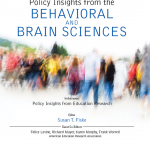Publications and Presentations
Dr. Wright’s research within the past five years is outlined below.
Publications
Examining Partisan Reporting of Critical Race Theory using Meta’s CrowdTangle
Dr. Wright and students Beatriz Coelho, Caitlyn Koerner, Cristina Ferrer, and Caitlin Rechdan examined partisan reporting related to Critical Race Theory (CRT) using Meta’s metrics platform, CrowdTangle and tracked Facebook posts by news media outlets from January 30, 2020, to January 30, 2022. The research was particularly interested in how mainstream news media reported on CRT and examined significant differences in consumers interactions with posts and page following from right-leaning, left-leaning, and neutral news media outlets. The study also examined the overperformance of posts. The study identified social media accounts that played a vital role in sharing content related to CRT and determined the potential impact of posts. The study found that right-leaning news media were more likely to post about CRT, compared to left-leaning and neutral news media outlets, with reporting beginning in June 2020. Neutral and left-leaning news media outlets began reporting on CRT months later. Results demonstrated that right-leaning news media outlets had more followers and more post interactions. Results also found variations in user interactions based on the partisan nature of the news media. Additionally, neutral news media had higher overperformance scores compared to other outlets.
metrics platform, CrowdTangle and tracked Facebook posts by news media outlets from January 30, 2020, to January 30, 2022. The research was particularly interested in how mainstream news media reported on CRT and examined significant differences in consumers interactions with posts and page following from right-leaning, left-leaning, and neutral news media outlets. The study also examined the overperformance of posts. The study identified social media accounts that played a vital role in sharing content related to CRT and determined the potential impact of posts. The study found that right-leaning news media were more likely to post about CRT, compared to left-leaning and neutral news media outlets, with reporting beginning in June 2020. Neutral and left-leaning news media outlets began reporting on CRT months later. Results demonstrated that right-leaning news media outlets had more followers and more post interactions. Results also found variations in user interactions based on the partisan nature of the news media. Additionally, neutral news media had higher overperformance scores compared to other outlets.
For further information please see the following article:
Wright, C. L., Coelho, B., Koerner, C., Ferrer, C., Rechdan, C., & *Larson, D. (2023). Examining partisan reporting of Critical Race Theory using Meta’s CrowdTangle. Journal of Media Research.
Portrayals of the Black Lives Matter Movement in Hard and Fake News and Consumer Attitudes toward African Americans
Dr. Wright and students Kwame Gatlin, Damaris Acosta, and Christopher Taylor examined the relationship between media portrayals of the Black Lives Matter (BLM) movement in hard and  fake news in varying media modalities (print versus video) and participant attitudes toward African Americans. They also examined sociodemographic factors that may be related to susceptibility of fake news. Participants were primed with either hard or fake news (print or video) prior to completing the online questionnaire. Participants included 385 college students from a large southeastern public university. The findings revealed a direct effect of fake news on attitudes toward African Americans but only if the news was from a printed media modality. Hard news also had a positive impact on participant attitudes if from a printed media modality. These findings may help explain why information learned via fake news is persistent over time. Biological sex and political affiliation were associated with the impact of media priming on participants, with male and Republican participants being more susceptible to the effects of fake news.
fake news in varying media modalities (print versus video) and participant attitudes toward African Americans. They also examined sociodemographic factors that may be related to susceptibility of fake news. Participants were primed with either hard or fake news (print or video) prior to completing the online questionnaire. Participants included 385 college students from a large southeastern public university. The findings revealed a direct effect of fake news on attitudes toward African Americans but only if the news was from a printed media modality. Hard news also had a positive impact on participant attitudes if from a printed media modality. These findings may help explain why information learned via fake news is persistent over time. Biological sex and political affiliation were associated with the impact of media priming on participants, with male and Republican participants being more susceptible to the effects of fake news.
For further information please see the following article:
Wright, C. L., Acosta, D., Taylor, C., & Gatlin, K. (2023). Portrayals of the Black Lives Matter movement in hard and fake news and consumer attitudes toward African Americans. Howard Journal of Communications, 34, 19-41.
“Let’s Go, Brandon”: An Expression of Disappointment, Partisan Reporting, and Distrust in News Media
Dr. Wright and students Donna Larson and Caitlin Rechdan examined potential partisan reporting of the “Let’s Go Brandon” (LGB) phrase using Meta’s metrics platform, CrowdTangle. “Let’s go Brandon” is a euphemism for “f*** Joe Biden,” which is frequently used to express disapproval of President Joe Biden. The study tracked posts by news media outlets (right-leaning, left-leaning, neutral) from October 1, 2021, to January 31, 2022. While the study was exploratory in nature and aimed to examine patterns and user interactions related to the posts, findings indicated that right-leaning news media outlets were more likely to post about LGB compared to left-leaning and neutral news media outlets. Additionally, posts by Fox News had the most user interactions. The study also found that right-leaning news media outlets were consistent in their postings related to LGB compared to left-leaning and neutral news media outlets. Results demonstrated that right-leaning news media outlets had more user followers as well as post interactions. The results also indicated variations in how users interacted with posts based on if it was from a right-leaning, left-leaning, or neutral news media outlet. When it came to overperformance in metrics of reactions, likes, comments, and shares on CrowdTangle (CT) in a given amount of time, neutral news media outlets had the highest level of overperformance compared to both right-leaning and left-leaning news media outlets.
CrowdTangle. “Let’s go Brandon” is a euphemism for “f*** Joe Biden,” which is frequently used to express disapproval of President Joe Biden. The study tracked posts by news media outlets (right-leaning, left-leaning, neutral) from October 1, 2021, to January 31, 2022. While the study was exploratory in nature and aimed to examine patterns and user interactions related to the posts, findings indicated that right-leaning news media outlets were more likely to post about LGB compared to left-leaning and neutral news media outlets. Additionally, posts by Fox News had the most user interactions. The study also found that right-leaning news media outlets were consistent in their postings related to LGB compared to left-leaning and neutral news media outlets. Results demonstrated that right-leaning news media outlets had more user followers as well as post interactions. The results also indicated variations in how users interacted with posts based on if it was from a right-leaning, left-leaning, or neutral news media outlet. When it came to overperformance in metrics of reactions, likes, comments, and shares on CrowdTangle (CT) in a given amount of time, neutral news media outlets had the highest level of overperformance compared to both right-leaning and left-leaning news media outlets.
For further information please see the following article:
Wright, C. L., Larson, D., & Rechdan, C. (2022). “Let’s Go, Brandon”: An Expression of Disappointment, Partisan Reporting, and Distrust in News Media. Media Psychology Review, 14(1).
College Student’s Distrust in Hard News and Exposure to Fake News During the COVID-19 Pandemic
Dr. Wright and students Kwame Gatlin and Renee Rivera conducted an experimental design that examined the effects of hard news and fake news related to the COVID-19 pandemic on participants levels of COVID-19 related knowledge, attitudes, anxiety, and intent to engage in protective measures to prevent the spread of the virus. We also examined sociodemographic factors (race, age, biological sex, political affiliation, RWA, social class) that were hypothesized to be directly related to COVID-19 related outcomes. Participants included 327 college students from a large southeastern public university in the United States who were primed with either fake news, hard news, or no news prior to completing an online questionnaire. We found differences in COVID-19 related outcomes based on experimental condition, but not in the predicted direction. Participants in the fake news condition had higher levels of COVID-19 knowledge, more positive attitudes related to the pandemic, and reported a higher intent to engage in protective measures. Participants in the hard news condition reported lower levels of COVID-19 knowledge, an increase in anxiety, and less intent to engage in protective measures. We also found a direct effect on COVID-19 related outcomes based on sociodemographic factors, particularly political orientation and RWA. Results are discussed specific to the college student population and should be helpful to those involved in policy making regarding social media, fake news, public health, and COVID-19 health recommendations for this population.
design that examined the effects of hard news and fake news related to the COVID-19 pandemic on participants levels of COVID-19 related knowledge, attitudes, anxiety, and intent to engage in protective measures to prevent the spread of the virus. We also examined sociodemographic factors (race, age, biological sex, political affiliation, RWA, social class) that were hypothesized to be directly related to COVID-19 related outcomes. Participants included 327 college students from a large southeastern public university in the United States who were primed with either fake news, hard news, or no news prior to completing an online questionnaire. We found differences in COVID-19 related outcomes based on experimental condition, but not in the predicted direction. Participants in the fake news condition had higher levels of COVID-19 knowledge, more positive attitudes related to the pandemic, and reported a higher intent to engage in protective measures. Participants in the hard news condition reported lower levels of COVID-19 knowledge, an increase in anxiety, and less intent to engage in protective measures. We also found a direct effect on COVID-19 related outcomes based on sociodemographic factors, particularly political orientation and RWA. Results are discussed specific to the college student population and should be helpful to those involved in policy making regarding social media, fake news, public health, and COVID-19 health recommendations for this population.
For further information please see the following article:
Wright, C. L., Gatlin, K., & Rivera, R. (2022). College student’s distrust in hard news and exposure to fake news during the COVID-19 pandemic. Journal of Media Research, 15 (1), 5-28.
Music Literacy: Effects of Music and Popular Media on Emerging Adults
Dr. Wright and colleagues from the APA’s Division 46 Task Force on the Sexualization of  Popular Music, along with student Reilly Branch, pilot tested a popular music media literacy website that was developed based on the final report of the APA Division 46 Task Force on the Sexualization of Popular Music (2018). The website can be found here. The study hypothesized that popular music media literacy education would produce significant differences between the baseline assessment and post-literacy assessment for outcomes related to music reflecting real life, viewing the self as similar to music portrayals, music skepticism, level of engagement with music, and self-reported self-esteem. It was also hypothesized that participants would report favorable attitudes regarding the popular music media literacy website being tested. Participants included 52 emerging adult college students who completed the baseline assessment and the post-literacy assessments after reviewing the popular music media literacy website. At baseline, participants reported moderate levels of music as reflecting real life, viewing themselves as similar to music representations, and self-reported self-esteem. Participants also reported high levels of music skepticism and engagement with music at baseline. Results indicated that the popular music media literacy website was effective in increasing general music skepticism. The implications for future research and next directions are discussed.
Popular Music, along with student Reilly Branch, pilot tested a popular music media literacy website that was developed based on the final report of the APA Division 46 Task Force on the Sexualization of Popular Music (2018). The website can be found here. The study hypothesized that popular music media literacy education would produce significant differences between the baseline assessment and post-literacy assessment for outcomes related to music reflecting real life, viewing the self as similar to music portrayals, music skepticism, level of engagement with music, and self-reported self-esteem. It was also hypothesized that participants would report favorable attitudes regarding the popular music media literacy website being tested. Participants included 52 emerging adult college students who completed the baseline assessment and the post-literacy assessments after reviewing the popular music media literacy website. At baseline, participants reported moderate levels of music as reflecting real life, viewing themselves as similar to music representations, and self-reported self-esteem. Participants also reported high levels of music skepticism and engagement with music at baseline. Results indicated that the popular music media literacy website was effective in increasing general music skepticism. The implications for future research and next directions are discussed.
For further information please see the following article:
Wright, C. L., Branch, R., Ey, L., Hopper, K. M., & Warburton, W. (2022). Music literacy: Effects of music and popular media on emerging adults. Journal of Media Literacy Education. Retrieved from https://digitalcommons.uri.edu/jmle-preprints/35/.
COVID-19 Fake News and Attitudes toward Asian Americans
Dr. Wright and student Hang Duong examined the relationship between an inability to identify COVID-19 fake news, right-wing authoritarianism (RWA), sociodemographic  factors (i.e., race, biological sex), and the level of xenophobia along with anti-Asian American sentiment. Participants included 100 male and female college students who answered questions about their social media usage. Participants were asked to identify social media news posts as either false or accurate. Participants also completed a series of measures regarding their attitudes toward Asian Americans and xenophobia. Sociodemographic variables of race and sex were examined as well as participants levels of RWA. Participants were frequent social media users, with many having multiple social media accounts. Almost twenty-one percent of participants were unable to identify COVID-19 fake news. Higher rates of xenophobia were found among White participants. Male, compared to female, participants were more likely to report experiencing kinship with Asian Americans. Both RWA and an inability to identify COVID-19 fake news were associated with increased prejudicial attitudes.
factors (i.e., race, biological sex), and the level of xenophobia along with anti-Asian American sentiment. Participants included 100 male and female college students who answered questions about their social media usage. Participants were asked to identify social media news posts as either false or accurate. Participants also completed a series of measures regarding their attitudes toward Asian Americans and xenophobia. Sociodemographic variables of race and sex were examined as well as participants levels of RWA. Participants were frequent social media users, with many having multiple social media accounts. Almost twenty-one percent of participants were unable to identify COVID-19 fake news. Higher rates of xenophobia were found among White participants. Male, compared to female, participants were more likely to report experiencing kinship with Asian Americans. Both RWA and an inability to identify COVID-19 fake news were associated with increased prejudicial attitudes.
For further information please see the following article:
Wright, C. L., & *Duong, H. (2021). COVID-19 fake news and attitudes toward Asian Americans. Journal of Media Research, 14 (1), 5-29, Doi: 10.24193/jmr.39.1
Media Portrayals of Immigration and Refugees in Hard and Fake News and their Impact on Consumer Attitudes
Dr. Wright and students Rebecca Brinklow-Vaughn, Kelsea Johannes, and Fiordaliz Rodrigues examined the effect of media portrayals of immigrants and refugees on  participant attitudes using an experimental design. Participants included 196 male and female college students who were primed with either negative or positive media portrayals of immigrants and refugees from either hard or fake news sources, or no media portrayals. Participants then answered questions regarding immigrants, immigration policy, and Islamophobia. Results indicated significant differences based on experimental condition for viewing immigration as an economic, cultural diversity, and humanitarian benefit, as well as cognitive Islamophobia. Additionally, the effect of media portrayals, whether positive or negative, in video clips had a stronger effect on participants if the video clips originated from a fake news source. Biological sex, race, social class, and political affiliation were found to relate to participant susceptibility to media portrayals from both hard and fake news sources.
participant attitudes using an experimental design. Participants included 196 male and female college students who were primed with either negative or positive media portrayals of immigrants and refugees from either hard or fake news sources, or no media portrayals. Participants then answered questions regarding immigrants, immigration policy, and Islamophobia. Results indicated significant differences based on experimental condition for viewing immigration as an economic, cultural diversity, and humanitarian benefit, as well as cognitive Islamophobia. Additionally, the effect of media portrayals, whether positive or negative, in video clips had a stronger effect on participants if the video clips originated from a fake news source. Biological sex, race, social class, and political affiliation were found to relate to participant susceptibility to media portrayals from both hard and fake news sources.
For further information please see the following article:
Wright, C. L., Brinklow-Vaughn, R., Johannes, K., & Rodriguez, F. (2020). Media Portrayals of Immigration and Refugees in Hard and Fake News and their Impact on Consumer Attitudes. The Howard Journal of Communications.
“Black Ish”: Disparagement Comedy and Consumer Attitudes toward African Americans
Dr. Wright and students Tina Ho, Elizabeth Raatma, and Megan Tompkins examined racial comedy and participants’ level of racism  and attitudes toward African Americans using an experimental design. It was hypothesized that exposure to disparagement humor would negatively influence viewers’ attitudes regarding African Americans. Additionally, a primary goal of the study was to examine a mediational model between race and exposure to disparagement racial comedy, ethnocentrism, and racism. Participants included 245 male and female college students who were randomly assigned to one of three experimental conditions where they viewed either (1) positive stereotypical portrayals of African Americans, (2) negative stereotypical portrayals of African Americans, or (3) no videos. Participants then completed measures of symbolic racism, pro-Black and anti-Black attitudes, and ethnocentrism. Results indicated that those who were primed with racial humor reported higher levels of anti-Black attitudes and ethnocentrism. Those who were primed with disparagement racial comedy reported higher levels of symbolic racism and pro-Black attitudes. Results of the Test of Joint Significance confirmed the mediational model in that White participants who viewed racial humor reported higher levels of ethnocentrism, which was then associated with higher levels of symbolic racism and anti-Black attitudes.
and attitudes toward African Americans using an experimental design. It was hypothesized that exposure to disparagement humor would negatively influence viewers’ attitudes regarding African Americans. Additionally, a primary goal of the study was to examine a mediational model between race and exposure to disparagement racial comedy, ethnocentrism, and racism. Participants included 245 male and female college students who were randomly assigned to one of three experimental conditions where they viewed either (1) positive stereotypical portrayals of African Americans, (2) negative stereotypical portrayals of African Americans, or (3) no videos. Participants then completed measures of symbolic racism, pro-Black and anti-Black attitudes, and ethnocentrism. Results indicated that those who were primed with racial humor reported higher levels of anti-Black attitudes and ethnocentrism. Those who were primed with disparagement racial comedy reported higher levels of symbolic racism and pro-Black attitudes. Results of the Test of Joint Significance confirmed the mediational model in that White participants who viewed racial humor reported higher levels of ethnocentrism, which was then associated with higher levels of symbolic racism and anti-Black attitudes.
For further information please see the following article:
Wright, C. L., Ho, T., Raatma, E., & Tompkins, M. (2019). “Black Ish”: Disparagement comedy and consumer attitudes toward African Americans. Media Psychology Review, 13(2).
Popular-Music Media Literacy: Recommendations for the Education Curriculum
Dr. Wright and colleagues from the APA’s Division 46 Task Force on the Sexualization of Popular Music provided evidence-based recommendations for popular music media literacy.  These recommendations are timely in that advances in technology have made music more readily accessible and geographic distance irrelevant in dissemination of music. Greater access to popular music has resulted in greater consumption by both children and teens. Popular music in the United States may contain the most sexual content, compared with other forms of media. Exposure to such content has been associated with the development of gender ideals and identity, objectification and sexualization of women, permissive sexual attitudes and risky sexual behaviors, as well as greater acceptance of sexual and gendered violence. Even so, current education standards do not include media literacy, much less popular music media literacy, and do not prepare children for best practices related to media consumption. Some of the inadequacies in current education standards include introducing education about media influence on personal development at an age far later than children’s engagement with contemporary media, avoidance of controversial topics, and not making this education compulsory. Considering the lack of media literacy provided in the curriculum, Dr. Wright and colleagues outlined specific foundational curricular recommendations related to media education and specifically for popular music media literacy.
These recommendations are timely in that advances in technology have made music more readily accessible and geographic distance irrelevant in dissemination of music. Greater access to popular music has resulted in greater consumption by both children and teens. Popular music in the United States may contain the most sexual content, compared with other forms of media. Exposure to such content has been associated with the development of gender ideals and identity, objectification and sexualization of women, permissive sexual attitudes and risky sexual behaviors, as well as greater acceptance of sexual and gendered violence. Even so, current education standards do not include media literacy, much less popular music media literacy, and do not prepare children for best practices related to media consumption. Some of the inadequacies in current education standards include introducing education about media influence on personal development at an age far later than children’s engagement with contemporary media, avoidance of controversial topics, and not making this education compulsory. Considering the lack of media literacy provided in the curriculum, Dr. Wright and colleagues outlined specific foundational curricular recommendations related to media education and specifically for popular music media literacy.
For further information please see the following article:
Wright, C. L., Dillman Carpentier, F., Ey, L., Hall, C., Hopper, K. M., & Warburton, W. (2019). Popular-music media literacy: Recommendations for the education curriculum. Policy Insights from the Behavioral and Brain Sciences, 6, 186-193.
The Influence of Media Portrayals of Immigration and Refugees on Consumer Attitudes: An Experimental Design
Dr. Wright and students Taylor DeFrancesco, Carissa Hamilton, and Lygia Machado conducted an experimental design that examined media portrayals of immigrants and  refugees and participants attitudes regarding immigrants, immigration policy, and Islamophobia. Participants included 284 male and female college students who were primed with negative, positive, or no media portrayals of immigrants and refugees prior to completing questionnaires related to their views regarding immigrants, immigration policy, and Islamophobia. Significant differences were found based on experimental condition for viewing immigration as an economic, physical, social cohesion, and modernity threat as well as physical benefits of immigration, intolerant attitudes toward immigrants, and affective-behavioral and cognitive Islamophobia. Participants who were primed with negative media portrayals reported more negative attitudes. Additionally, biological sex, race, social class, and political and religious affiliation were found to relate to participant susceptibility to media portrayals of immigration and refugees.
refugees and participants attitudes regarding immigrants, immigration policy, and Islamophobia. Participants included 284 male and female college students who were primed with negative, positive, or no media portrayals of immigrants and refugees prior to completing questionnaires related to their views regarding immigrants, immigration policy, and Islamophobia. Significant differences were found based on experimental condition for viewing immigration as an economic, physical, social cohesion, and modernity threat as well as physical benefits of immigration, intolerant attitudes toward immigrants, and affective-behavioral and cognitive Islamophobia. Participants who were primed with negative media portrayals reported more negative attitudes. Additionally, biological sex, race, social class, and political and religious affiliation were found to relate to participant susceptibility to media portrayals of immigration and refugees.
For further information please see the following article:
Wright, C. L., DeFrancesco, T., Hamilton, C., & Machado, L. (2019). The influence of media portrayals of immigration and refugees on consumer attitudes: An experimental design. The Howard Journal of Communications.
Sexualized Popular Music and Risky Sexual Behaviors Among Emerging Adults from the United States and Australia
Dr. Wright and Dr. Rubin from the University of Newcastle collaborated to examine the relationship between sexualized music, dating and sexual histories, and risky sexual  behaviors among emerging adults from both the USA and Australia. Sexualization in music lyrics and videos were assessed using content analysis of the top artists rated by participants in each country. Results indicated variations in dating and sexual histories as well as risky sexual behaviors among participants from the USA and Australia. Participants from both countries reported greater exposure to sexualized music videos compared to music lyrics. Additionally, USA participants reported greater exposure to sexualized music videos compared to participants from Australia, who reported greater exposure to sexualized music lyrics. Dr.’s Wright and Rubin addressed four specific research questions as this research was exploratory in nature. They found that increased exposure to sexualized content in music lyrics and videos mediated the relationship between location (USA, Australia) and engagement in risky sexual behaviors.
behaviors among emerging adults from both the USA and Australia. Sexualization in music lyrics and videos were assessed using content analysis of the top artists rated by participants in each country. Results indicated variations in dating and sexual histories as well as risky sexual behaviors among participants from the USA and Australia. Participants from both countries reported greater exposure to sexualized music videos compared to music lyrics. Additionally, USA participants reported greater exposure to sexualized music videos compared to participants from Australia, who reported greater exposure to sexualized music lyrics. Dr.’s Wright and Rubin addressed four specific research questions as this research was exploratory in nature. They found that increased exposure to sexualized content in music lyrics and videos mediated the relationship between location (USA, Australia) and engagement in risky sexual behaviors.
For further information please see the following article:
Wright, C. L., & Rubin, M. (2019). Sexualized popular music and risky sexual behaviors among emerging adults from the United States and Australia. The Howard Journal of Communications.
Report of the Division 46 Task Force on the Sexualization of Popular Music
Dr. Wright and colleagues from the APA’s Division 46 Task Force on the Sexualization of  Popular Music reviewed current research on the topic. The Task Force synthesized such research and outlined research challenges and consequences that have been associated with exposure to increased sexualization in popular music. The Task Force also made recommendations for future research as well as the education systems, popular-music media literacy, public policy, and the music industry.
Popular Music reviewed current research on the topic. The Task Force synthesized such research and outlined research challenges and consequences that have been associated with exposure to increased sexualization in popular music. The Task Force also made recommendations for future research as well as the education systems, popular-music media literacy, public policy, and the music industry.
The full report can be accessed in the following article:
Wright, C. L. Dillman Carpentier, F., Ey, L. A., Hall, C. Hopper, K. M. & Warburton, W. (2018). Report of the Division 46 Task Force on the Sexualization of Popular Music. Washington, DC: Division 46 (Society for Media Psychology & Technology) of the American Psychological Association.
“Love Me!” Examining the Effect of Music Censorship on Sexual Priming and Sexual Cognitions
Dr. Wright and students Maria Toro Arenas, Priscilla Martinez, Kathryn McMullen, and  Rhea Philip conducted a quasi-experimental study that examined the relationship between exposure to sexual content in music, sexual priming, and sexual cognitions. Participants included 165 male and female emerging adult college students. Participants were randomly assigned to four experimental conditions where they viewed either (1) music videos containing explicit sexual lyrics, (2) the same music videos with censored lyrics, (3) music videos with no explicit content, or (4) no videos. Participants in each group then completed a 30-second timed word-completion task, developed for this study, as a measure of sexual priming followed by items related to sexual cognitions. Results indicated that exposure to censored or uncensored music videos containing sexual content was associated with increased sexual priming, indicating that music censorship is ineffective in prohibiting viewers awareness of explicit material. However, this was a short-term effect as sexual priming was not related to participants’ reported sexual cognitions.
Rhea Philip conducted a quasi-experimental study that examined the relationship between exposure to sexual content in music, sexual priming, and sexual cognitions. Participants included 165 male and female emerging adult college students. Participants were randomly assigned to four experimental conditions where they viewed either (1) music videos containing explicit sexual lyrics, (2) the same music videos with censored lyrics, (3) music videos with no explicit content, or (4) no videos. Participants in each group then completed a 30-second timed word-completion task, developed for this study, as a measure of sexual priming followed by items related to sexual cognitions. Results indicated that exposure to censored or uncensored music videos containing sexual content was associated with increased sexual priming, indicating that music censorship is ineffective in prohibiting viewers awareness of explicit material. However, this was a short-term effect as sexual priming was not related to participants’ reported sexual cognitions.
For further information please see the following article:
Wright, C. L., Toro Arenas, M., Martinez, P., McMullen, K., & Philip, R. (2018). “Love me!” Examining the effect of music censorship on sexual priming and sexual cognitions. Media Psychology Review, 12(1).
Music and Substance Use: A Meta-Analytic Review
Dr. Wright and students Tia Ball, Kaleigh Kambour, Lygia Machado, Taylor DeFrancesco, Carissa Hamilton, Jeanette  Hyatt, and Jacquelynne Dauk conducted the first ever meta-analysis on the relation between music and substance use among consumers. While previous research has documented a relation between music and substance use among consumers, to date, there are no meta-analytic reviews of the literature, making this meta-analysis the first in this area. Our meta-analysis focused on music that previous research has documented containing increased levels of substance use references. We also examined the different types of substances that have been examined in previous research. We also examined different music formats and potential moderators related to participant demographics and research study design. The overall effect size of music on substance use was .19. We found variations based on substance type, music format, and music genre. We also found that study location and participant biological sex moderated the effect of music on substance use.
Hyatt, and Jacquelynne Dauk conducted the first ever meta-analysis on the relation between music and substance use among consumers. While previous research has documented a relation between music and substance use among consumers, to date, there are no meta-analytic reviews of the literature, making this meta-analysis the first in this area. Our meta-analysis focused on music that previous research has documented containing increased levels of substance use references. We also examined the different types of substances that have been examined in previous research. We also examined different music formats and potential moderators related to participant demographics and research study design. The overall effect size of music on substance use was .19. We found variations based on substance type, music format, and music genre. We also found that study location and participant biological sex moderated the effect of music on substance use.
For further information please see the following article:
Wright, C. L., Ball, T., Kambour, K., Machado, L., DeFrancesco, T., Hamilton, C., Hyatt, J., & Dauk, J. (2018). Music and substance use: A meta-analytic review. Journal of Ethnicity in Substance Abuse.
Sexual Content in Music and its Relation to Sexual Attitudes and Behaviors among Consumers: A Meta-Analytic Review
Dr. Wright and student Brittany Centeno conducted the first ever meta-analysis on the relation  between sexual content in music and the sexual attitudes and behaviors of consumers. While music content has been included in previous meta-analytic reviews examining sexual content in media and sexual health outcomes, our meta-analysis is the first to focus specifically on music content. Considering that previous research has not standardized the sexual outcomes examined in our meta-analysis, outcomes were grouped in two categories: sexual attitudes and sexual behaviors. This study also focused specifically on sexual content in audio music and music videos and examined potential moderators. Results from 26 studies indicated that sexual content in music had a significant effect on sexual attitudes and behaviors, with both music format and genre being significant contributors. While the overall effect of sexual content in music on sexual behaviors can be considered small (.16), the effect of sexual content in music on sexual attitudes approached a moderate effect size (.25). Additionally, participant race/ethnicity, biological sex, age, study location, and study design were found to be significant moderators.
between sexual content in music and the sexual attitudes and behaviors of consumers. While music content has been included in previous meta-analytic reviews examining sexual content in media and sexual health outcomes, our meta-analysis is the first to focus specifically on music content. Considering that previous research has not standardized the sexual outcomes examined in our meta-analysis, outcomes were grouped in two categories: sexual attitudes and sexual behaviors. This study also focused specifically on sexual content in audio music and music videos and examined potential moderators. Results from 26 studies indicated that sexual content in music had a significant effect on sexual attitudes and behaviors, with both music format and genre being significant contributors. While the overall effect of sexual content in music on sexual behaviors can be considered small (.16), the effect of sexual content in music on sexual attitudes approached a moderate effect size (.25). Additionally, participant race/ethnicity, biological sex, age, study location, and study design were found to be significant moderators.
For further information please see the following article:
Wright, C. L., & Centeno, B. (2018). Sexual Content in Music and its relation to Sexual Attitudes and Behaviors among Consumers: A Meta-Analytic Review. Communication Quarterly.
Media Influences on Perception of Driving Risk and Behaviors of Adolescents and Emerging Adults
Dr. Wright and student Kelly Silberman examined the impact of exposure to dangerous  driving behaviors via media on the perception of driving risk and driving behaviors by assessing 1,356 male and female college students between the ages of 17 and 25. It was hypothesized that (a) increased media exposure to dangerous driving behaviors would be related to positive attitudes regarding risky driving behaviors as well as engaging in such behaviors and (b) media exposures would be related to participant attitudes, which, in turn, would be related to participants driving behaviors. Results of hierarchical regression analyses confirmed that media exposure to dangerous driving behaviors were related to attitudes regarding driving and driving behaviors, while controlling for participant age and gender, with self-reported movie exposure playing a greater role than self-reported exposure via video games. A Test of Joint Significance confirmed that media exposure to dangerous driving behaviors were related to participants attitudes regarding driving, which, in turn, were associated with reported driving behaviors. Theoretical explanations are discussed.
driving behaviors via media on the perception of driving risk and driving behaviors by assessing 1,356 male and female college students between the ages of 17 and 25. It was hypothesized that (a) increased media exposure to dangerous driving behaviors would be related to positive attitudes regarding risky driving behaviors as well as engaging in such behaviors and (b) media exposures would be related to participant attitudes, which, in turn, would be related to participants driving behaviors. Results of hierarchical regression analyses confirmed that media exposure to dangerous driving behaviors were related to attitudes regarding driving and driving behaviors, while controlling for participant age and gender, with self-reported movie exposure playing a greater role than self-reported exposure via video games. A Test of Joint Significance confirmed that media exposure to dangerous driving behaviors were related to participants attitudes regarding driving, which, in turn, were associated with reported driving behaviors. Theoretical explanations are discussed.
Kelly’s original Honors in the Major Thesis was presented at the APS. Kelly graduated from UCF in 2015 and was accepted into the graduate program in social work at Florida State University.
For further information please see the following article:
Wright, C. L., & Silberman, K. (2018). Media Influence on Perception of Driving Risk and Behaviors of Adolescents and Emerging Adults. Transportation Research Part F: Traffic Psychology and Behaviour, 54, 290-298.
“Boy’s Club”: Examining Sexist Humor on Types of Sexism and Femininity Ideology Using Two Research Approaches
Dr. Wright and students Taylor DeFrancesco, Carissa Hamilton, and Natasha  Vashist examined sexist humor and participants’ level of sexism and femininity ideology using two research approaches: (1) a quasi-experimental design in which participants were primed with sexist humor and (2) a correlational approach using content analysis to estimate exposure to sexist humor in media. It was hypothesized that exposure to sexist humor would influence viewer’s sexist views and femininity ideology. It was also hypothesized that the quasi-experimental design would yield confirmatory results of the initial hypothesis while the correlational design would not. Participants included 1,559 male and female college students who were randomly assigned to three experimental conditions (viewed sexist humor, viewed non-sexist humor, viewed no videos) and then answered questions related to sexism and femininity ideology followed by general demographic items and media viewing preferences. Results confirmed that the quasi-experimental design, in comparison to the correlational design, yielded more confirmatory results in that those exposed to sexist humor had higher scores on all outcome measures examined. Limitations of priming and content analysis are discussed as well as directions for future research in this area.
Vashist examined sexist humor and participants’ level of sexism and femininity ideology using two research approaches: (1) a quasi-experimental design in which participants were primed with sexist humor and (2) a correlational approach using content analysis to estimate exposure to sexist humor in media. It was hypothesized that exposure to sexist humor would influence viewer’s sexist views and femininity ideology. It was also hypothesized that the quasi-experimental design would yield confirmatory results of the initial hypothesis while the correlational design would not. Participants included 1,559 male and female college students who were randomly assigned to three experimental conditions (viewed sexist humor, viewed non-sexist humor, viewed no videos) and then answered questions related to sexism and femininity ideology followed by general demographic items and media viewing preferences. Results confirmed that the quasi-experimental design, in comparison to the correlational design, yielded more confirmatory results in that those exposed to sexist humor had higher scores on all outcome measures examined. Limitations of priming and content analysis are discussed as well as directions for future research in this area.
For further information please see the following article:
Wright, C. L., DeFrancesco, T., Hamilton, C., & Vashist, N. (2018). “Boy’s Club”: Examining Sexist Humor on Types of Sexism and Femininity Ideology Using Two Research Approaches. HUMOR: International Journal of Humor Research, 31, 129-150.
Presentations
Wright, C. L., Rechdan, C., Larson, D., Coelho, B., Koerner, C., & Ferrer, C. (April 2023). Hot topic partisan reporting: Examining news reporting using Meta’s CrowdTangle. Poster presentation for the Southeastern Psychological Association annual convention.
Haxel, C., & Wright, C. L. (April 2023). Technology screens and effects on attention: A meta-analysis. Poster presentation for the Southeastern Psychological Association annual convention.
Rechdan, C., & Wright, C. L. (April 2023). The phenomenon on the infantilization of women. Poster presentation for the Southeastern Psychological Association annual convention.
Wright, C. L., Gatlin, K., & Rivera, R. (March 2022). College student’s distrust in hard news and exposure to fake news during the COVID-19 pandemic. Poster presentation for the Southeastern Psychological Association annual convention.
Wright, C. L., Acosta, D., Taylor, C., & Gatlin, K (March 2022). Portrayals of the Black Lives Matter movement in hard and fake news and consumer attitudes toward African Americans. Poster presentation for the Southeastern Psychological Association annual convention.
Wright, C. L. (chair), Hogg, J. L., & Mendoza. A. (August 2020). Changing academic jobs. Panel presentation for the American Psychological Association annual convention.
Wright, C. L., (chair), Poffenroth, M., Hogg, J, L., Plante, T., Bray, J., & Rich, G. (August 2019). Landing your first academic position. Panel presentation for the American Psychological Association annual convention.
Wright, C. L., DeFrancesco, T., Hamilton, C., & Machado, L. (August 2019). The Influence of Media Portrayals of Immigration and Refugees on Consumer Attitudes. Poster presentation for the American Psychological Association annual convention.
Wright, C. L. (chair), Klein, R., Popenroth, M., Birne-Stone, S., Hogg, J. L. (August 2019). Fake News and Misinformation – Why it has spread and why it matters. Panel presentation for the American Psychological Association annual convention.
Wright, C. L. (August 2019). Neuroscience and Technology of Creativity. Panel presentation for the American Psychological Association annual convention.
Wright, C. L. (August 2019). Neuroscience of Music. Invited discussant for the panel presentation for the American Psychological Association annual convention.
Wright, C. L., Toro Arenas, M., Martinez, P., McMullen, K., & Philips, R. (August 2018). Examining the effect of music censorship on sexual priming and sexual cognitions. Poster presentation for the American Psychological Association annual convention.
Wright, C. L., & Scholl, B. (August 2018). Music sexual content and consumer sexual attitudes and behaviors: A meta-analysis. Poster presentation for the American Psychological Association annual convention.
Wright, C. L. (chair), Bray, J., Hogg, J. L., Rich, G., Hancock, P., & Gomberg, L., Hill, L. (August 2018). The changing landscape of academia. Panel presentation for the American Psychological Association annual convention.